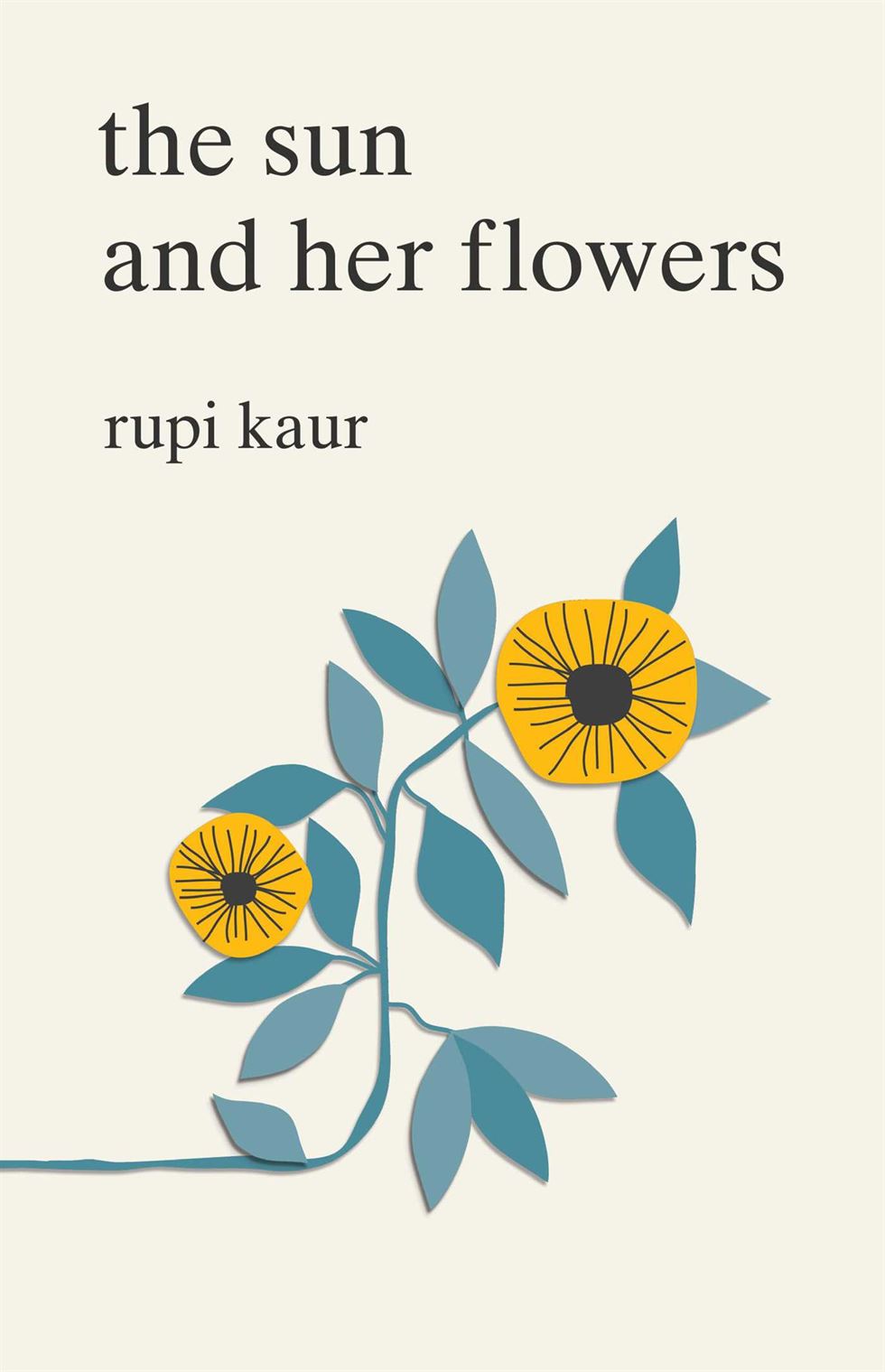Whether you read poetry or not, you have probably heard of Rupi Kaur. The 25-year-old poet is a leader in reshaping approaches to poetry in the 21st century. Kaur’s first book, “Milk and Honey” was semi autobiographical. In her second body of work, “The Sun and Her Flowers,” the poet seems to take a step back and reshape her experiences in order to connect to people who’ve been through universal trails such as a breakup, loneliness, womanhood, migration and immigration.
Kaur’s style of writing no doubt pushes back against poetic forms developed by our patriarchal society and challenges the word poetry. With that being said, I do have a few bones to pick with the innovator. The book is broken up into five chapters: wilting, falling, rooting, rising and blooming. While I expected the poet to use each chapter as a tool to create a linear progression of the speaker’s topics – turmoil and growth – the content of each chapter is not exclusive to any particular section of the book. Because of this, I did struggle to interpret the book as a second body of work by a feminist figure.
Kaur’s first book, “Milk and Honey” was published back in 2014 and continues to move people today. Touching on themes of self-acceptance, femininity, relationships and many more, the work follows the healing of the speaker’s soul.
In her first collection of poems, there was a clear linear progression of emotion in each chapter leading to the speaker healing and moving forward. In “The Sun and Her Flowers,” each chapter is named after a different phase; however, this is not reflected in the progression of the subjects of the poems. The piece seems to bounce back and forth about the exact same ideas that the first book seemed to have settled up nicely. It would have been easy to create smoothness to the book through the rearranging of the poems featured, something Kaur achieved in “Milk and Honey.”
However, whether she is touching on love, consent, personal growth or migration, Kaur depicts all of them in a way that readers can individually connect with. For every ounce of metaphor within her work, there’s a level of realism and feminism to her poetry that cannot be ignored.
While the work seems like an emotional step back from the first book at times, that really is the pace of human feeling. I am not sure if Kaur intended to achieve this, but the rawness is present. While I am aware of this, part of me wanted Kaur to dig even deeper with her second body of work. It is known that her work is not something to be compared to formal poetry. Kaur’s spirit is that of art for art’s sake. She is very inclusive and works to make everyone feel wanted and understood, something everyone has the right to.
It is important to see the authenticity of Kaur’s style and her determination to not follow poetic forms developed and rooted by the patriarchy for hundreds of years. The true development of the modern female narrative starts with experimentation and only ends with each individual’s open mindedness. With that being said, “The Sun and Her Flowers” is dominant and shameless. Kaur succeeds in creating content that can be felt. Overall, it reaffirms her simplistic style to be here to stay and promises more from her in the future.



